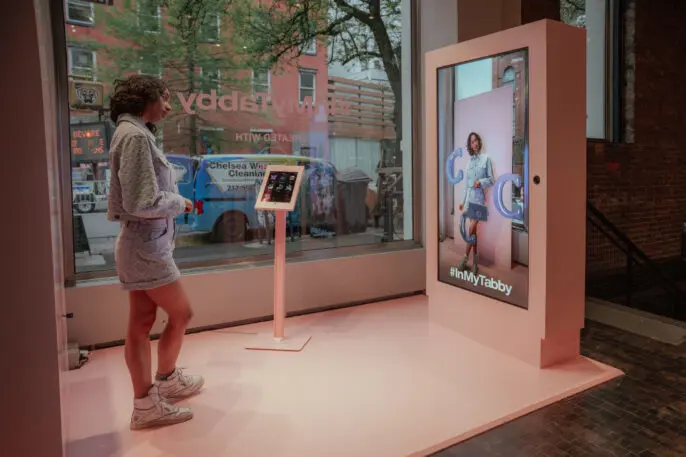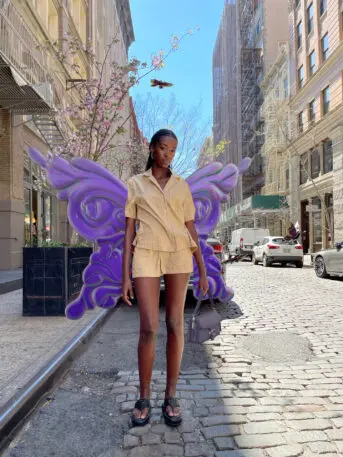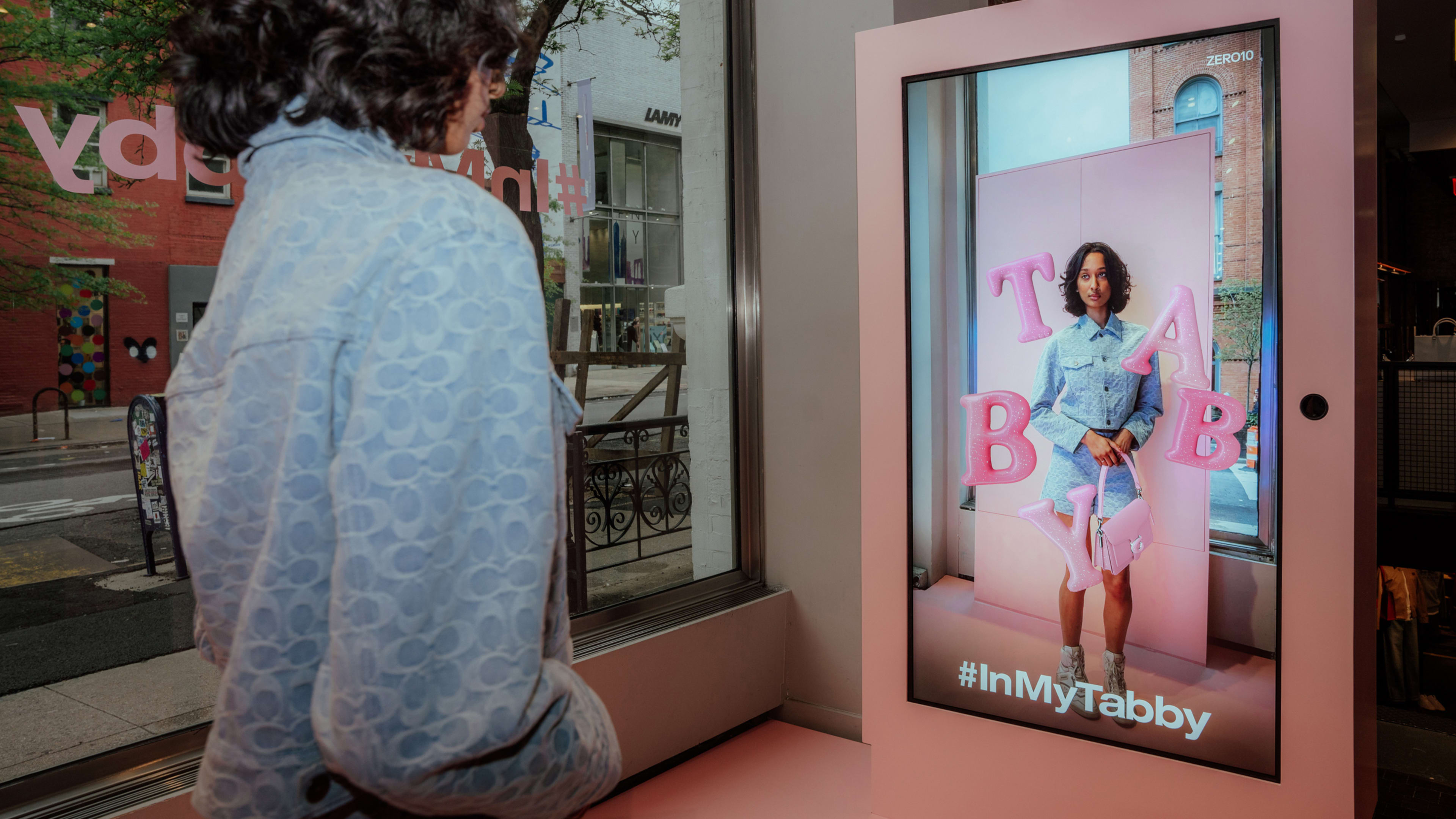Augmented reality is fast becoming retailers’ new best friend. Over the past few years, dozens of brands from Ikea to Warby Parker to Cartier have started experimenting with variations of AR technology that let customers visualize how a sofa would fit inside their living room, try on a pair of glasses from the comfort of their home, or even see what a $35,000 Cartier ring would look like on their hand. But in Manhattan, one brand is now using AR as bait to get more people through the door.

Earlier this month, Coach installed an “AR mirror” on the storefront of its SoHo flagship. As people walk by, the mirror stops them in their tracks with a reflection of them holding various versions of the brand’s bestselling bag, the Tabby. This mirror is in fact a screen that displays a video of you moving in real-time, then overlays that video with a 3D model of a handbag, either strapped over your virtual shoulder or clasped in the palm of your virtual hand.
The experience was designed by Zero10, a fashion AR try-on company that, until now, specialized in augmented clothing try-on, with partnerships like Tommy Hilfiger, Crosby Studios, and Maisie Wilen. To date, the company has launched four AR mirrors in Tommy Hilfiger’s London, Milan, and Berlin stores, and Zero10 CEO George Yashin tells me they are rolling out 40 more mirrors over the next three months, across France, The Netherlands, Germany, Australia, and China.
In many cases, the AR mirrors are located inside the store, with the difficult yet noble mission of converting an I can’t be bothered to try this on a potential customer into an actual customer. But Coach’s storefront AR mirror has a different mission: It’s about capturing your attention and luring you in, where you can try on the products in real life (or in front of another AR mirror).
Within a week of the storefront mirror installation, the Zero10 team says it has noticed the number of people who pay attention to its window display increase by 93.5% and in-store traffic has jumped by almost 50% (though the exact conversion rate remains unclear.)
I can see the appeal. When I visited, I walked past several swanky SoHo stores boasting what I’m sure were dazzling storefronts, but I barely took notice. By comparison, the Coach storefront turned something I hate (shopping) into something I love (playing). When I stepped in front of the “mirror,” I was presented with a version of me holding a purple Tabby in my right hand, while purple butterfly wings gently flapped behind my back. Thirty seconds later, there I was holding a pink Tabby, while individual letters spelling out “Tabby” were floating around me. I never saw myself as a Tabby girl, but for a minute, it was fun to see what that would look like.

Zero10’s AR mirrors are powered by a supercomputer that uses computer vision models to render clothing (and handbags) in 4K resolution. Typically, an AR mirror uses 3D body tracking and cloth simulation to help consumers try on realistic-looking clothing. In this case, the company developed a new technique that incorporates Ragdoll physics, like those used in the gaming industry, to create a digital character that responds to the laws of physics. For Coach, this means customers can move their hands and watch as the handbag moves along with them.

To be clear, the experience isn’t entirely like looking at a mirror. When I went into the store and played around with the AR mirror inside it, I was able to choose the exact Tabby I wanted to try on virtually, then compare it with a real Tabby I picked up from a shelf. Soon enough, I noticed the virtual bags appeared brighter in color than the real ones. My “reflection” also appeared slightly askew, likely due to the fact that the camera was placed on one side of the screen.
Yashin says the supercharged colors and additional graphics—like butterfly wings—are meant to add a playful touch to the experience. “If the client wants digital designs to look exactly like the physical prototypes, we could do it,” he says. He also notes that the team is now working on a mirror that will capture the image from two cameras instead of one, resulting in a more realistic digital image.

Ultimately (and unsurprisingly), Yashin envisions AR mirrors will become an integral part of any retail experience. “Now the AR tool is a part of the physical store to drive foot traffic, but I truly believe that AR mirror will become a new type of retail itself,” he says. Instead of taking up “100 square meters” for a traditional store, he says, brands could take up a much smaller footprint and install an “AR kiosk” that allows shoppers to try something on virtually, purchase it, and have it delivered to their home.

Whether consumers will be willing to buy something they can’t touch remains to be seen. But the AR mirror at Coach are proof that, despite the cringe-inducing nature of the word, phygital perhaps really is the future of retail.
Recognize your brand’s excellence by applying to this year’s Brands That Matter Awards before the final deadline, June 7.
Sign up for Brands That Matter notifications here.
